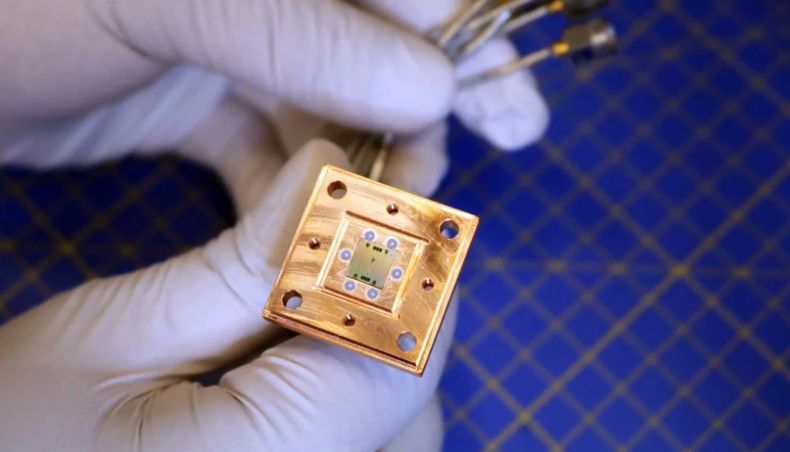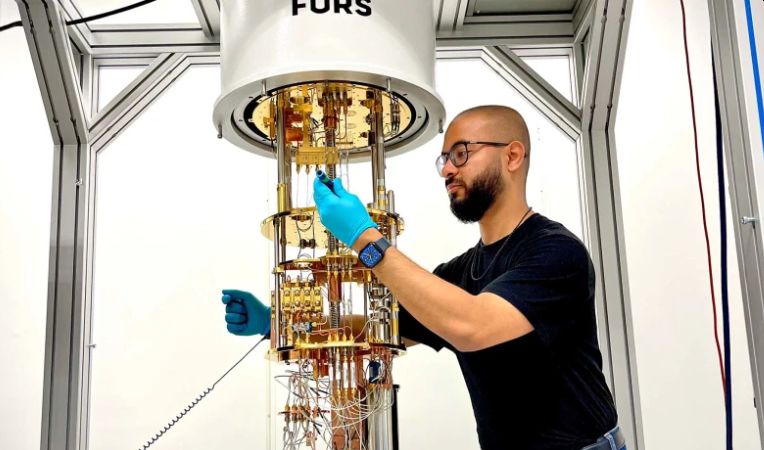
An interesting development around quantum computing has surfaced. We all know that these quantum systems require super cold temperature to operate at their optimal performance.
Why? Well, the fundamental blocks of quantum computers, which are, the qubits cannot function in regular temperature. For reliable quantum computation, these quantum systems require extremely low temperatures as they are highly sensitive to their surroundings, in fact, even a tiny disturbance by weak electromagnetic interference can cause errors in their system.
These qubits have a fascinating characteristic, they can be in a superposition state. They can remain in 0 and 1 at the same time, which allows quantum computers to do calculations in parallel mode, processing multiple possibilities at once.
The catch in the entire operation is, their calculation time is somewhat limited, as they need to spend time in fixing the errors. The errors include noise and interference in their quantum states. So, to combat this error correction time, these systems need to be cooled to temperature close to absolute zero (0 Kelvin or -273.15 degrees Celsius).
It’s like, once these qubits reach their chilly temperatures, they settle into their comfy lowest-energy state. And this is exactly where the calculations take place.
Autonomous Quantum Thermal Machine
Until now scientists have been using dilution refrigerators for quantum computing but it can cool qubits to about 50 millikelvin above absolute zero. Touching temperatures closer to absolute zero has remained a wild fantasy.
However, researchers at Chalmers University of Technology, Sweden, and the University of Maryland, U.S., have engineered a new type of refrigerator that can complement dilution refrigerators.
The new quantum refrigerator is capable of cooling qubits to a very low temperature (22 millikelvin), which is much colder than typical refrigerators and essential for maintaining quantum coherence in qubits.
Unlike traditional methods that rely on mechanical refrigeration, this exciting quantum refrigerator takes a different approach by harnessing the interactions between three qubits:
- The target qubit: The qubit that needs to be cooled.
- Two cooling qubits: These qubits are used to transfer heat away from the target qubit, effectively lowering its temperature.

How does it work?
In simple terms, here’s how the quantum refrigerator works:
- Energy from the Environment: The refrigerator gathers warm energy from its surrounding. In a way, the warm environment acts as a “heat source” or a “hot bath”.
- Heat Transfer Between Qubits: The warm environment forwards the energy to one of the refrigerator’s qubits, these qubits are already existing in multiple states at one time. As the “flow” of the heat is moving, first qubit takes-in the heat from the target qubit (the one that needs to be cooled).
- Cooling the Target Qubit: So, the heat from the target qubit gets passed over to another qubit in the refrigerator, which is nice and cool. This chilly qubit happily “absorbs” the heat.
- Dumping the Heat: The cold qubit is further connected to an even chillier environment, allowing it to release heat and “dump” it into the surroundings, which helps to cool down the target qubit even more.
- Autonomous System: The process happens automatically, without needing any outside control or intervention. It works on its own once set up.
To sum up, this refrigerator cools down a target qubit by transferring its heat to other qubits. It does this by transferring its heat to other qubits and then letting that heat escape into a cooler environment, all on its own.
Setting New Standards Beyond Current Reset Protocols
If we talk about performance, this new method holds a qubit in the ground state, before computation, to an impressive 99.97%. This is really remarkable because the previous technique managed the ground state to about 99.8% to 99.92%. Although, the difference seems a small improvement but when it comes to quantum computation, this difference leads to a boost in efficiency when performing multiple computations.
The new autonomous quantum thermal machine developed by the researchers has set a bar that goes above and beyond the current reset protocols.
Takeaway
The quantum refrigerator is super cool innovation as it leverages energy from the environment and this technique provides more efficient and reliable way to cool qubits. Once this mechanism goes full swing, it will lead to error-free quantum computations with less hardware overload.
Isn’t it exciting to think about all the amazing breakthroughs still out there in the world of quantum systems? I wonder what other natural principles we could explore to help shape the future of computing!



